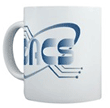Do you trust dacsdoc? by John Lansdale Last month, in a tight deadline, the editors of dacsdoc made a few mistakes. Reprinted one paragraph twice, truncated another, printed a wrong number in the math puzzle, and a couple of others. If the editors were in charge of a NASA space launch, I think there would be a crash. In case you have any doubts about the current issue, I propose the following audit. Buy a copy of the NY Times or USA Today or some other national newspaper. Sit down at a table with a web browser computer to one side. Measure out an area of the national newspaper with a word count approximately equal to dacsdoc’s. Mark any mistake in either publication with a red magic marker. Then, mark yellow anything you spot that looks like a lie or a deliberate spin*. Use Google** to cross check if you’re not sure. Dig deep, sometimes they’re well hidden! Subtract all words in any paragraph containing red or yellow. Subtract the whole article if there’s any yellow because when someone is deliberately lying about something it makes everything suspect. Half a truth is worth less than none. The correct count/initial word count is your trust index. You could make it more accurate using a pink marker in cases of secondary spin. For example, an author feels some Microsoft or Apple technology is superior only because that’s what they work with. Give that a penalty but not as much as yellow because at least the intention is honest. My motivation for writing this was an article from a recent issue of a public relations trade professional publication, The Daily Dog. ( www.bulldogreporter.com/dailydog/ ) Author MJ Gilhooley’s headline was “PR Must Face the Scary Truth: Media Relations May Be a Ghost in a Web 2.0 World.” She doesn’t delve into Web 2.0. The gist of her article isn’t technical. It’s that the old days of pushing spin out to the media is over. Interactive truthfulness is in. People, using web 2.0 to communicate, trust each other more than the media. So now PR professionals must become more engaged and interactive. (i.e. Truthfully lie to us personally?) Web 2.0 has slightly different definitions. One emphasizes the tools; Open Source, Content Management Systems, LAMP, Ajax, XML, RSS, etc. The other emphasizes the effect; a revolution in communication. If you’re interested in any aspect of this subject, come on down to the the Open Source SIG on the third Monday night and join in. There is no prerequisite skill. Sometimes we talk about technology (those tools), other times about applications, the ones we find and others we might write ourselves. Right now we’re getting an excellent introduction to Java by Mac SIG leader and natural teacher Richard Corzo. Earlier, we learned what a LAMP server is and how to run one on your laptop. We’ve setup many Web 2.0 tools. Drupal, Joomla, Wordpress, TikiWiki, OSCommerce, Ajax, RSS, Perl, Eclipse, & etc..We’ve started writing our own web application but, for the lack of time have stopped. We’ll be getting back to applications soon. A presidential election is coming up and it’s time to start thinking about what Web 2.0 means to our country. I do trust dacsdoc but I read it with care. A different kind of care when reading about politics. Rockets must be launched carefully. John Lansdale, CDP, MCP * Endorsement by a third party, so-called expert. See www.prwatch.org Background from Wikipedia (a web 2.0 phenomena itself!) http://en.wikipedia.org/wiki/Web_2 Web 2.0 refers to a perceived second generation of web-based communities and hosted services — such as social-networking sites, wikis and folksonomies — which aim to facilitate collaboration and sharing between users. The term became popular following the first O'Reilly Media Web 2.0 conference in 2004.[1][2] Although the term suggests a new version of the World Wide Web, it does not refer to an update to any technical specifications, but to changes in the ways software developers and end-users use the web. According to Tim O'Reilly, "Web 2.0 is the business revolution in the computer industry caused by the move to the internet as platform, and an attempt to understand the rules for success on that new platform."[3] Some technology experts, notably Tim Berners-Lee, have questioned whether one can use the term in a meaningful way, since many of the technology components of "Web 2.0" have existed since the early days of the Web.[4] [5]
|
Mugs and more, visit CafePress to order
